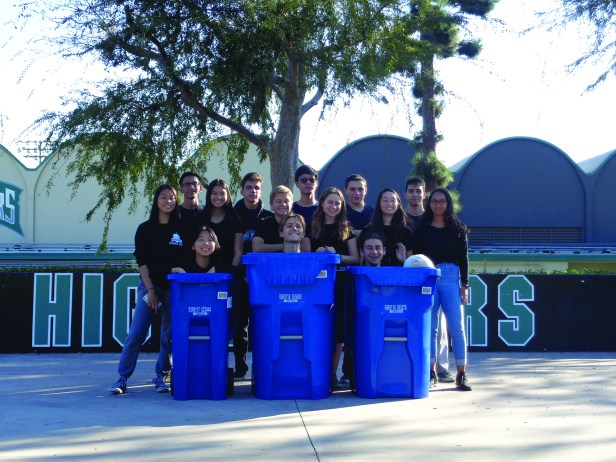 By: Eunice Kim
By: Eunice Kim
The Granada Hills Charter High School (GHC) Science Team received a $10,000 InvenTeams Grant from the Lemelson-MIT Program in October, which will give its members the opportunity to create an invention that solves a real-life issue of their choice.
The device the team members proposed is the System of Electromagnetic Assisted Locking (SEAL). By attaching the electromagnetic lock mechanism to the inner lid of trash cans, the receptacle is able to remain closed when problems like high winds or animal attempts to access the bin’s contents arise. It engages when tipped to a particular angle.
Thus, the contents of the trash cannot spill and pollute the neighborhoods, waters, and local ecosystems.
One of the two sets of the locking mechanisms will continue to allow people to open the trash cans as usual; the device will also not disrupt the trash collection process.
Each year, the Lemelson-MIT program, administered by the School of Engineering at the Massachusetts Institute of Technology (MIT) in collaboration with the Lemelson-Foundation, awards grants of up to $10,000 to 15 teams of U.S. high school students, educators, and mentors.
The InvenTeams are an initiative of the Lemelson-MIT program, which drives young inventors nationwide to turn their ideas into working prototypes. One team has been assembled at GHC to compete in the InvenTeams competition.The program encourages students to get hands-on experience while applying science, technology, engineering, and math (STEM) skills.
“There are lots of STEM opportunities within the Science Team. InvenTeams offers kids the ability to participate in an engineering project that will actually come to fruition. They get to solve problems throughout the year, learn how to use different machinery and techniques, such as a 3D printer, and will get to work with professionals in the field,” senior and team president Kyle Friedman said.
Coaches Ellen Reavey and Jeanette Chipps had to first apply and be selected as an Excellence in Custom Installed Technologies and Electronics (EXCITE) Award recipient prior to the proposal. Upon receiving the award, Reavey spoke with teams across the nation and different administrations from the Lemelson-MIT Program.
Then, to obtain the InvenTeam grant, the team had to compose an invention proposal: an explanation of the importance of the issue and how the device would work, as well as its feasibility.
“It’s great to see students that are so passionate about using science to solve problems in our community. These students wrote a strong grant application,”Ms. Chipps said.
The goal of the Science Team is to have four to five working prototypes and to work with the Los Angeles Sanitation Department to complete a pilot test. To accomplish that, students will work with teachers and other mentors to complete the designs of their invention. The team has designated the remainder of this year for a section of the team to improve the design of the SEAL and progress on constructing a prototype, which will eventually lead to a finished product.
During the summer of 2019, a group of students from the Science Team will travel to MIT in Cambridge for the Lemelson-MIT Program’s EurekaFest, where the InvenTeams can display their working prototypes at its public exhibit.
